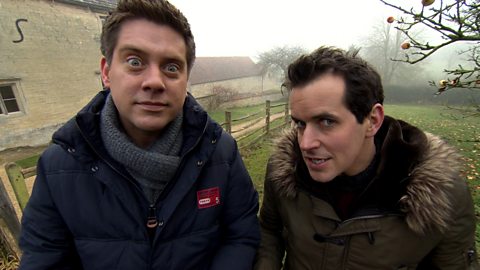More than 40 years ago, the world watched as Neil Armstrong became the first man to walk on the moon.
Yes, this is exactly what it would've been like when Neil Armstrong walked on the moon!
What are you doing?
Stop it! Right, get out!
HE GASPS
He was the mastermind behind the rocket that blasted Apollo 11 to the moon.
In the words of NASA, the greatest rocket scientist in history.
We give you… Wernher von Braun.
Let me out!
Von Braun was born in Germany in 1912.
With me, it started with the moon. My parents gave me a telescope.
As a child, he was fascinated by the idea of going to space.
So were a lot of other people. And they thought rocket power might be the way to get there. But probably not in a car. Von Braun studied maths and physics to understand the science of how rockets work. But it would be years before he built one to go to the moon, because when he was 20, Von Braun started developing rockets for the German army. Then, in 1939, the Second World War started.
Von Braun led the team that developed the V2 missile used by the Nazis during the war. The V2 could hit targets up to 200 miles away, killing thousands of people. As a weapon of war, it was deadly, but as a rocket design, it was groundbreaking. So, in 1945, when Germany was defeated and the war ended, America secretly hired Von Braun and other Nazi scientists like him to work for the US.
Von Braun's genius idea was the Saturn V, the world's most powerful rocket. It stood 111 metres tall, and fully-fuelled, weighed about the same as 400 elephants.
And in 1969, it helped land men on the moon in the Apollo 11 spacecraft.
"It's one small step for man, one giant leap for mankind."
Now, we can't get to the moon, but we have made it to the home of the East Anglian Rocket Society, or EARS for short.
We've asked one of their finest rocketeers to help us build and launch a rocket of our own.
Rockets normally have a tube that forms the main part of the body. Fuel goes in the back, pointy bit goes on the front, and that's kind of it.
Our rocket is almost ready to fly. It just needs some rocket fuel and a name.
We're going to name this rocket Pat!
Oh, for goodness sake!
We're leaving Ben to add the rocket fuel and get Pat ready to fly, but what we still need to find out is exactly how rockets work. If only there was a friendly scientist around to explain. Ah! Fran! We would like to know how rockets go up.
To make something go up, all you've got to do is push something else down.
Agh!
Not like that! But we're going to do it with this pop bottle here. It's got some water in and we're going to push that water down and then that'll push the pop bottle up.
I've seen these in toy shops.
Yep. And to make the water go down, all you've got to do is pump some air in.
Pump it! Right. Pumping!
Do you want to put your foot on there, as well? Keep pumping. That's it. Keep going.
Come on!
Keep going!
Agh!
Great!
That was brilliant.
But not as brilliant as our very own rocket, Pat!
Three… Two… One…
Pat! Pat! Pat!
Blast off! Ohhh! Brilliant!
That's it! It's gone!
That was genius! But we don't want to stop there. Inspired by Von Braun, we want to send a man all the way to space.
I did a bit of number crunching. We can't afford a bigger rocket to send into space, so instead we're going to be using a balloon!
And here's the man we're sending up, Diddy-Dom, complete with tin-foil spacesuit cos we couldn't afford a real one. And a massive slap-head.
To help get our idea off the ground, it's Steve Randall, an expert in high altitude ballooning.
We want to try and send Diddy-Dom here up to the outer rim of space.
No trouble.
Is it possible?
Yeah, absolutely.
Great. How?
Well, we'll stick him into this rig.
Oh, OK.
Diddy-Dom will sit in his own polystyrene space pod. We're using mini cameras to film him.
The helium balloon should lift Diddy-Dom thousands of metres to the edge of space.
This is it!
Three… Two… One…
Blast off!
Whey! Just seconds after launch, he's already 275 metres high.
We're tracking Diddy-Dom's flight using Steve's GPS system and sat-nav.
Diddy-Dom is floating almost 30,000 metres above Earth. So high, the blue has disappeared from the sky. And he can see the curvature of the earth.
No way! That is awesome!
It almost seems unreal! Von Braun, it was you that inspired us to do this. We salute him because he is an absolute genius.
Video summary
Dick, Dom and Fran Scott from 'Absolute Genius' look at the scientific work of Wernher von Braun.
Wernher von Braun designed the rocket that sent Apollo 11 to the moon, and was described by NASA as “the greatest rocket scientist in history”.
However, as a member of the Nazi party during World War Two, and having worked to develop the V2 missile, he is a controversial figure.
The V2 was constructed at the Mittelwerk site by prisoners from Mittelbau-Dora, a concentration camp where an estimated 20,000 prisoners died during the war.
After 1945, despite his involvement with the Nazis, he was secretly hired by the US to work in their space program.
This short film is from the CBBC series, Absolute Genius with Dick & Dom.
Teacher Notes
This short film could inspire pupils to write and present a spoof news report on von Braun's work and the launch of Apollo 11.
They could conduct further research into the life and work of Wernher von Braun and consider if he deserves the title 'absolute genius', taking into consideration his involvement with the Nazi party.
As a fun activity, students could investigate water rockets. They could change variables such as the amount of water and the shape and size of the rocket to discover how these factors effect how far the water rocket travels.
Pupils could then design blueprints for their own space rockets, labelling the key elements.
This short film is suitable for teaching science at Key Stage 2 in England, Wales and Northern Ireland, and Second Level in Scotland.
Discovering the work of Archimedes. video
Dick and Dom describe the major scientific achievements of 'Absolute Genius', Archimedes, who is best known for his work on floating and sinking.
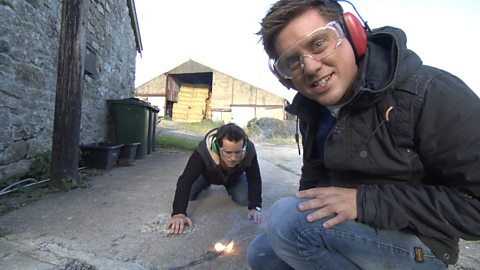
Discovering the work of Delia Derbyshire. video
Dick and Dom describe the major scientific achievements of 'Absolute Genius', Delia Derbyshire, including creating electronic music.
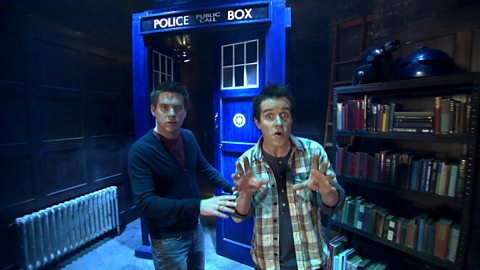
Discovering the work of Elsie Widdowson. video
Dick and Dom describe the scientific achievements of 'Absolute Genius', Elsie Widdowson, who was the first to discover the nutrional values of many foods.
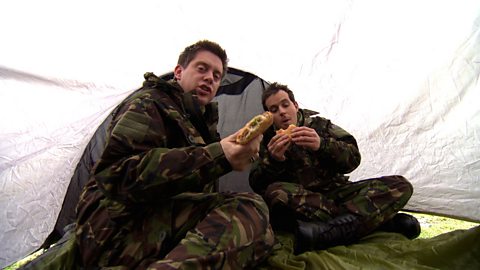
Discovering the work of Isambard Kingdom Brunel. video
Dick and Dom describe the achievements of 'Absolute Genuis', Isambard Kingdom Brunel, who designed famous bridges.
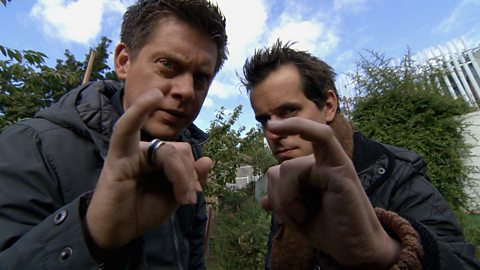
Discovering the work of James Watt. video
Dick and Dom describe the major scientific achievements of 'Absolute Genius', James Watt, who made steam engines much more efficient.
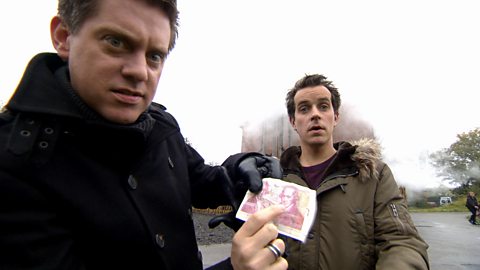
Discovering the work of Joseph Bazalgette. video
Dick and Dom describe the major scientific achievements of Joseph Bazalgette, who designed one of the first ever sewers.
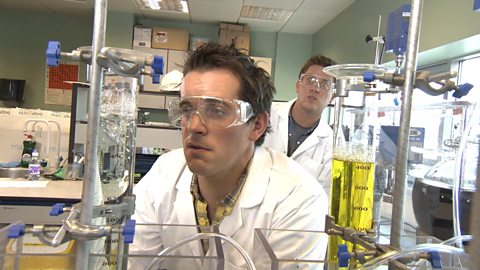
Discovering the work of Leonardo da Vinci. video
Dick and Dom describe the scientific achievements of 'Absolute Genius', Leonardo da Vinci, who is famous for his painting of the Mona Lisa.
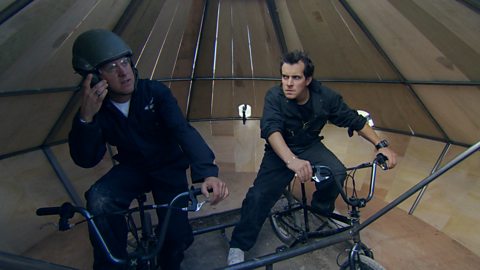
Discovering the work of Michael Faraday. video
Dick and Dom describe the major scientific achievements of Michael Faraday, who is most remembered for his work on electrical energy.
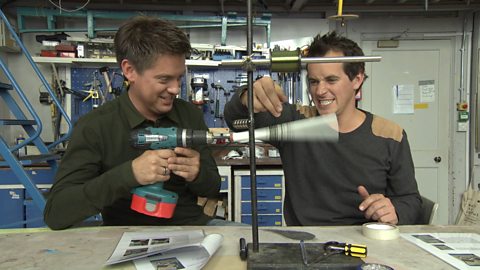
Discovering the work of Sir Isaac Newton. video
Dick and Dom describe the scientific achievements of Isaac Newton, who is best known for discovering gravity.
